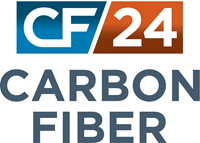Building an aircraft without molds or fasteners?
MTorres has a concept (TRL 6) with which aircraft will be built with minimal hand labor, without typical molds, without metallic fasteners, and without typical stringers as they are used today.

Elemental rings are fitted to create a mandrel for the fuselage skin in this MTorres demonstrator fuselage.
Source | MTorres
It was exactly one year ago that I wrote a blog about a new way to build an aircraft fuselage, and I actually used the word “flabbergasted” in that story. MTorres (Torres de Elorz, Navarra, Spain) had just fabricated a demonstrator fuselage (nose to tail cone) for the 2017 Paris Air Show, and unveiled the concept to the Spanish press.
Well, I didn’t forget about the company’s efforts, and at this year’s JEC World composites event in Paris, there was the demonstrator at the MTorres stand. I had booked an appointment, and on the last day of the show, I had the chance to sit down with Luis Enrique de la Iglesia y Gotarredona, MTorres’ Integrated Assembly group’s key account manager for the technology, to discuss the robotic fabrication concept in more detail. I was aided by two detailed and lengthy concept videos that show all of the automated fabrication steps (see the links to those videos at the conclusion of this blog).
MTorres has a concept (TRL 6) with which aircraft will be built with minimal hand labor, without typical molds, without metallic fasteners (with the exception of interior fittings, wiring, etc.), and without typical stringers as they are used today. Two basic elements — “rings” and floor panels — are made first. These “elementals” become the molds over which the fuselage skin is wound. The rings are grooved; these grooves are robotically filled with foam shapes to form a flush surface, over which the final skin is wound. What this does is essentially form hat-shaped stringers, automatically and without the need for separately-made stringers and ribs to support the fuselage skin. In existing composite aircraft, MTorres has calculated that stringers account for 30% of the material but 70% of the overall cost. The technology won a JEC Innovation award, and attracted the attention of renowned composites researcher Prof. Stephen Tsai at the show.
Read all about this new technology in our upcoming July 2018 issue of CW magazine, being finalized now, in the “Inside Manufacturing” story. In the meantime, the videos are available on YouTube, at these links: https://www.youtube.com/watch?v=lZBtUZg2uwQ, and https://www.youtube.com/watch?v=o4bkRRreWHI. Be sure to watch the first link first, as it covers the elemental fabrication. The second video link (ending in WHI) covers final assembly of the elementals and overwinding of the skin. I expect you’ll be flabbergasted too.
Related Content
-
Materials & Processes: Fabrication methods
There are numerous methods for fabricating composite components. Selection of a method for a particular part, therefore, will depend on the materials, the part design and end-use or application. Here's a guide to selection.
-
Plant tour: Joby Aviation, Marina, Calif., U.S.
As the advanced air mobility market begins to take shape, market leader Joby Aviation works to industrialize composites manufacturing for its first-generation, composites-intensive, all-electric air taxi.
-
Composite rebar for future infrastructure
GFRP eliminates risk of corrosion and increases durability fourfold for reinforced concrete that meets future demands as traffic, urbanization and extreme weather increase.
















